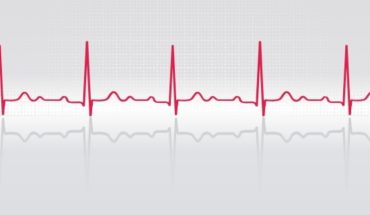Researchers at the University of East Anglia have developed a new way of identifying patients at risk of an irregular heartbeat, known as ‘atrial fibrillation’.
While not life threatening, the condition increases people’s risk of having a transient ischaemic attack (TIA) or stroke by up to five times.
A new study reveals four specific factors that can predict which patients will have atrial fibrillation.
These include older age, higher diastolic blood pressure and problems with both the coordination and function of the upper left chamber of the heart.
The team went on to create an easy tool for doctors to use in practice to identify those at high risk.
And they hope that this will help diagnose and treat more patients, reducing their risk of future strokes.
Lead researcher Prof Vassilios Vassiliou, from UEA‘s Norwich Medical School and Honorary Consultant Cardiologist at the Norfolk and Norwich University Hospital, said: “Identifying who is at high risk and more likely to develop atrial fibrillation is very important.
“This is because it requires specific treatment with anticoagulants, commonly known as blood thinners, to reduce the risk of future strokes.
“Patients who have had a stroke usually undergo multiple investigations to determine the cause of the stroke, as this can influence the treatment they receive long-term.
“These investigations include prolonged monitoring of the heart rhythm with a small implantable device called a loop recorder, and an ultrasound of the heart, called an echocardiogram.”
The research team collected data from 323 patients across the East of England, treated at Cambridge University Hospital, who had had a stroke with no cause identified- known as Embolic Stroke of Undetermined Source.
They analysed medical records as well as data from prolonged heart rhythm monitoring. They also studied their echocardiograms.
Prof Vassiliou said: “We determined how many of these patients were found to have atrial fibrillation up to three years following their stroke, and went on to perform a thorough assessment to identify if there are specific parameters that are connected with atrial fibrillation identification.
“We identified four parameters that were linked with the development of atrial fibrillation, which were consistently present in patients that had this arrhythmia. We then developed a model that can be used to predict who will show atrial fibrillation in the next three years, and is therefore at increased risk of another stroke in the future.”
“This is a very easy tool that any doctor can use in clinical practice,” he added.
“And it can potentially help doctors provide more targeted and effective treatment to these patients, ultimately aiming to highlight the people at higher risk of this arrhythmia that can benefit from prolonged heart rhythm monitoring and earlier anticoagulation to prevent a future stroke.”
This research was led by the University of East Anglia in collaboration with Cambridge University Hospitals NHS Foundation Trust, West Suffolk Hospital NHS Foundation Trust, the University of Cambridge, the Norfolk and Norwich University Hospital and the University of Newcastle.
‘Atrial Fibrillation in Embolic Stroke of Undetermined Source: Role of advanced imaging of left atrial function’ is published in the European Journal of Preventive Cardiology and simultaneously presented at the European Society of Cardiology in Amsterdam.
- Breaking the ice for men’s mental health - 26th December 2025
- New bowel cancer test for early detection - 26th December 2025
- New method accelerates resistance testing in UTIs - 26th December 2025







